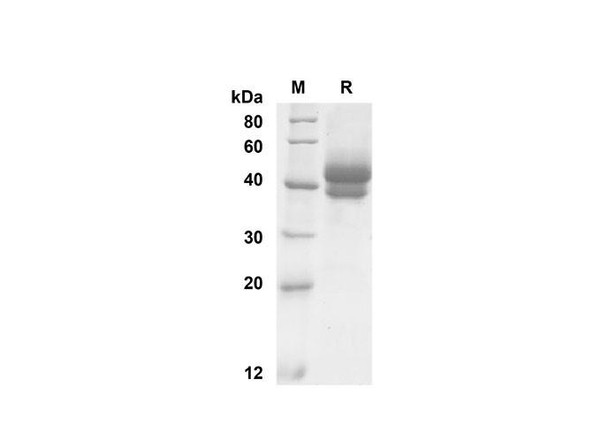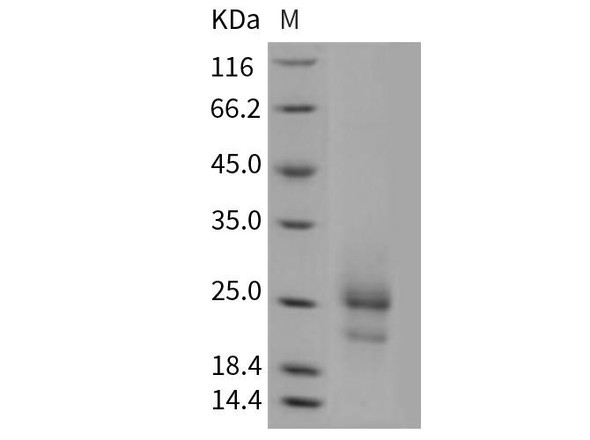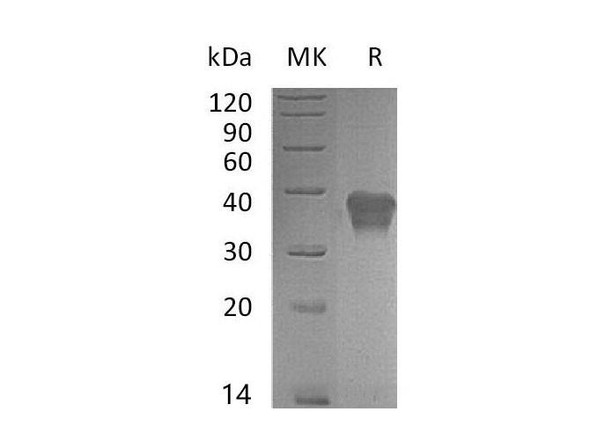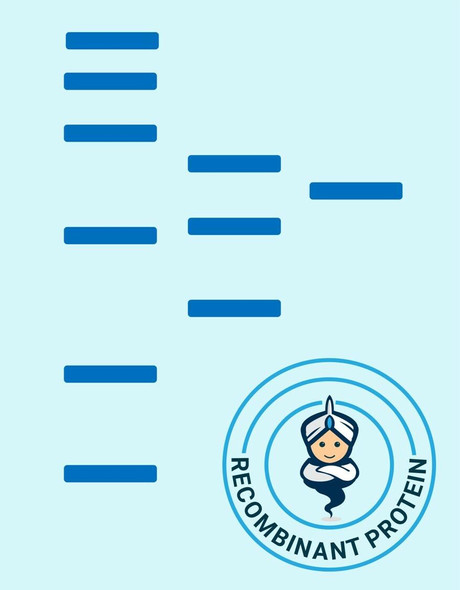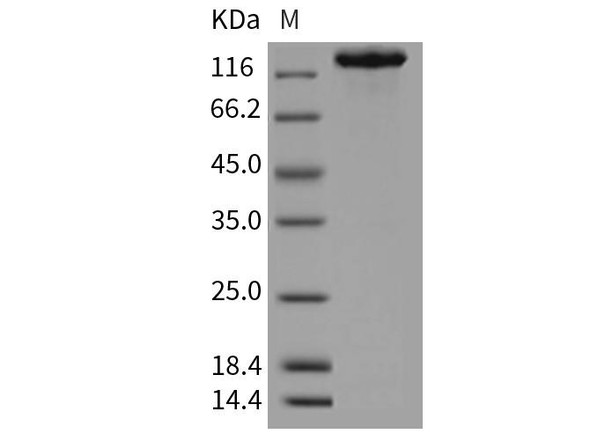Thymic Stromal Lymphopoietin (TSLP) was originally identified as an activity from the conditioned medium of a Mouse thymic stromal cell line that promoted the development of B cells. The activities of Mouse TSLP overlap with , but are distinct from , those of Mouse IL-7. Both Mouse TSLP and IL-7 can co-stimulate growth of thymocytes and mature T cells , and support B lymphopoiesis in long-term cultures of fetal liver cells and bone-marrow cells. Whereas Mouse IL-7 facilitates the development of B220+/IgM-pre-B cells , Mouse TSLP promotes the development B220+/IgM+ B cells. Human TSLP was reported to preferentially stimulate myeloid cells, inducing the release of T cell-attracting chemokines from monocytes and enhancing the maturation of CD11c+ dendritic cells. Mouse TSLP cDNA encodes a 140 amino acid (aa) residue precursor protein with a 19 aa signal sequence. Within the mature region , there are three potential N-glycosylation sites and 7 cysteine residues. Mouse TSLP shares approximately 43% aa sequence identity with Human TSLP. The gene for Mouse TSLP has been localized to chromosome 18. By Northern and RT-PCR analysis , Mouse TSLP expression has been detected in spleen , thymus , kidney , lung and bone marrow. TSLP is proposed to signal through a heterodimeric receptor complex that consists of IL-7 R alpha and the TSLP R , a new member of the hemopoietin receptor family most closely related to R gamma c.

